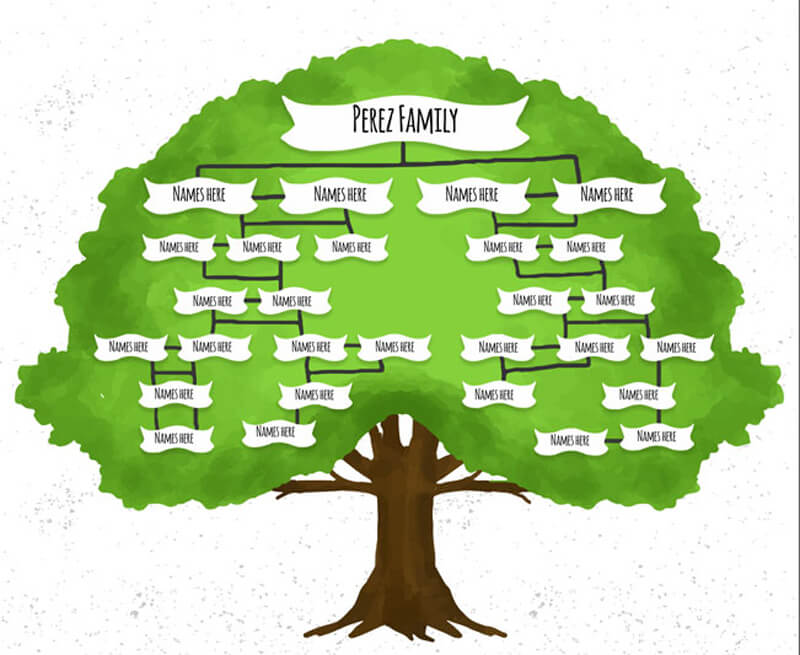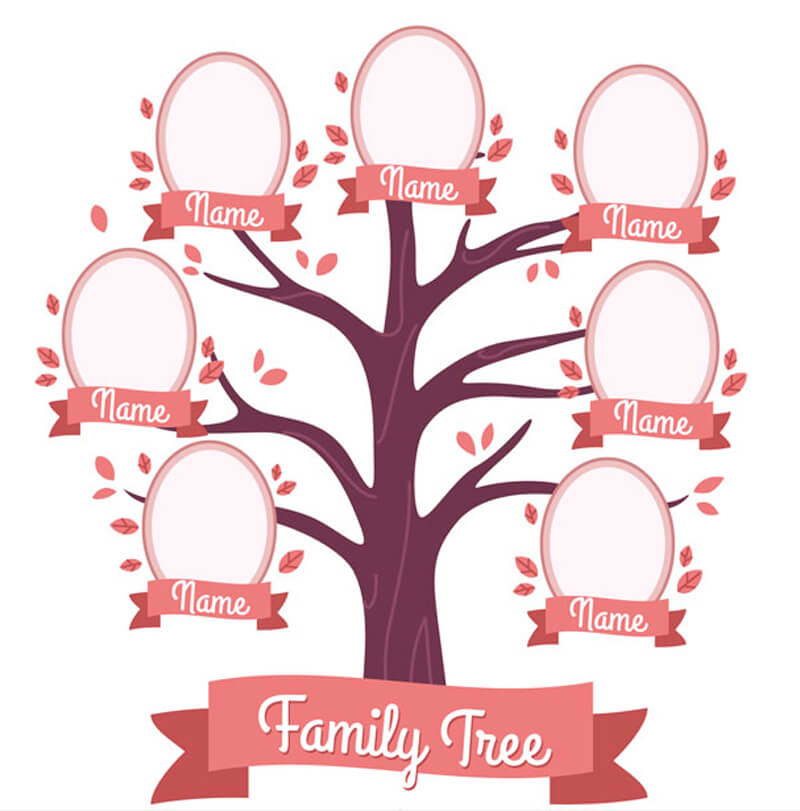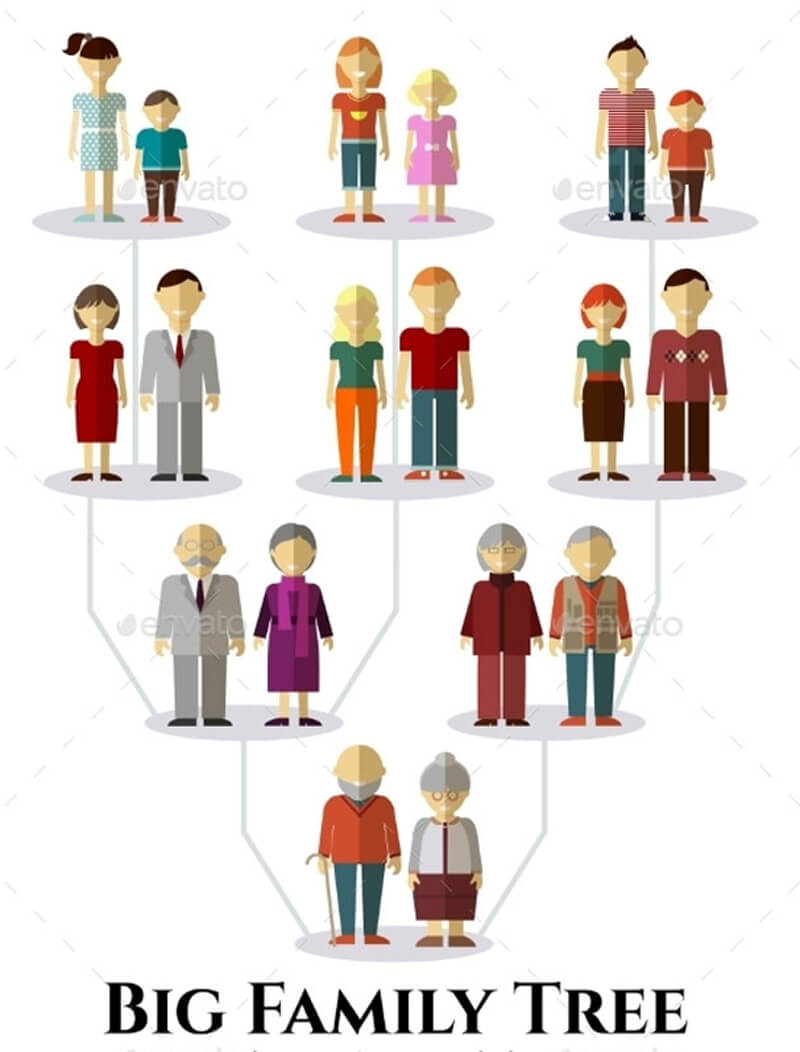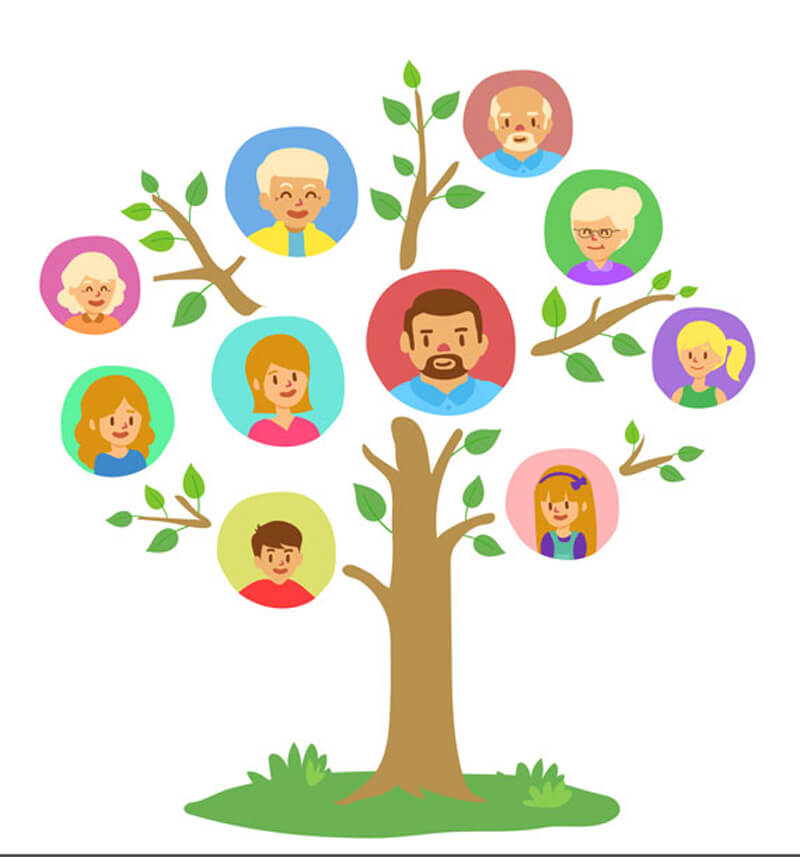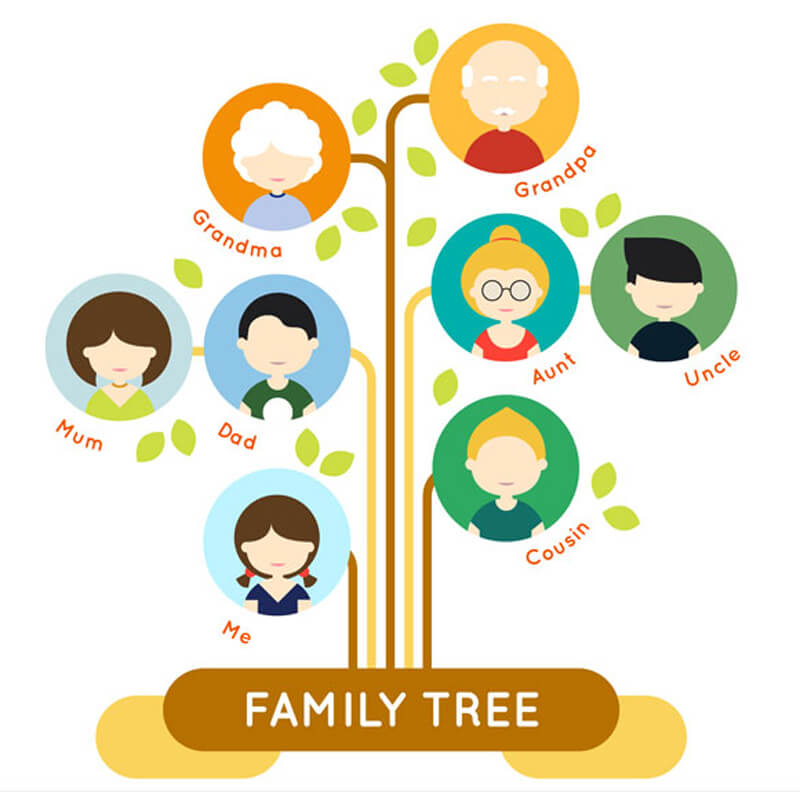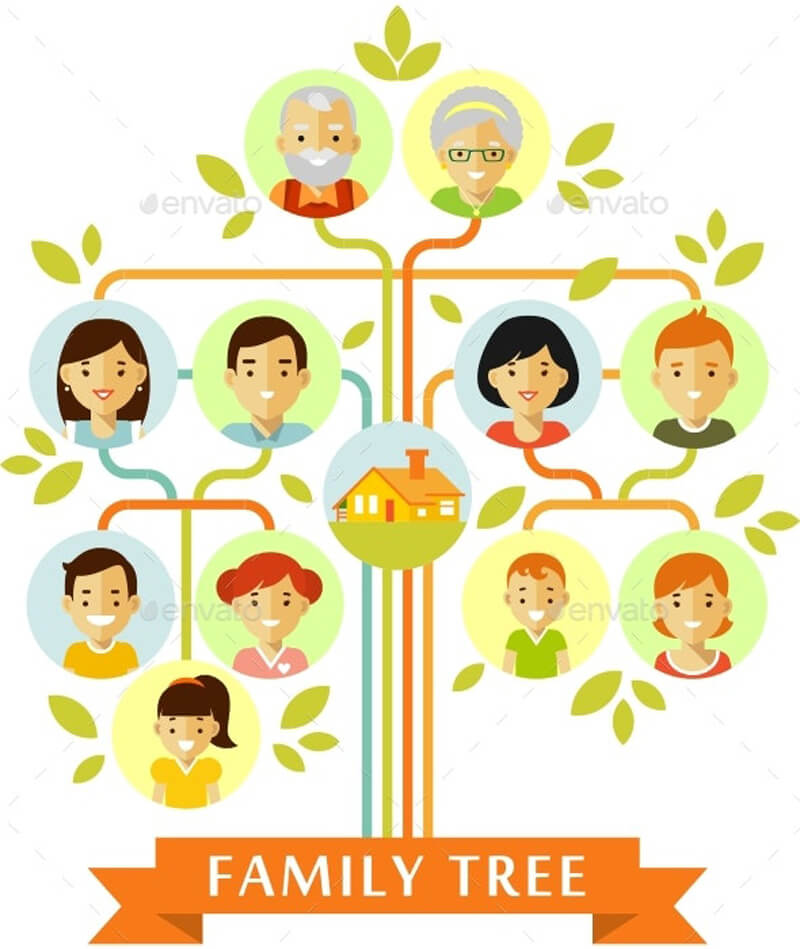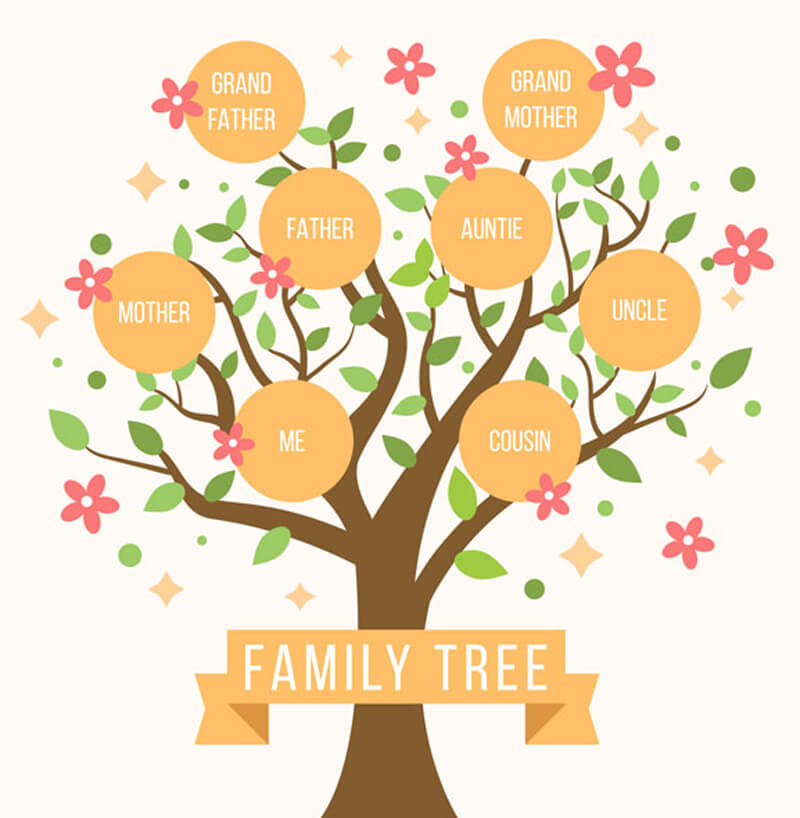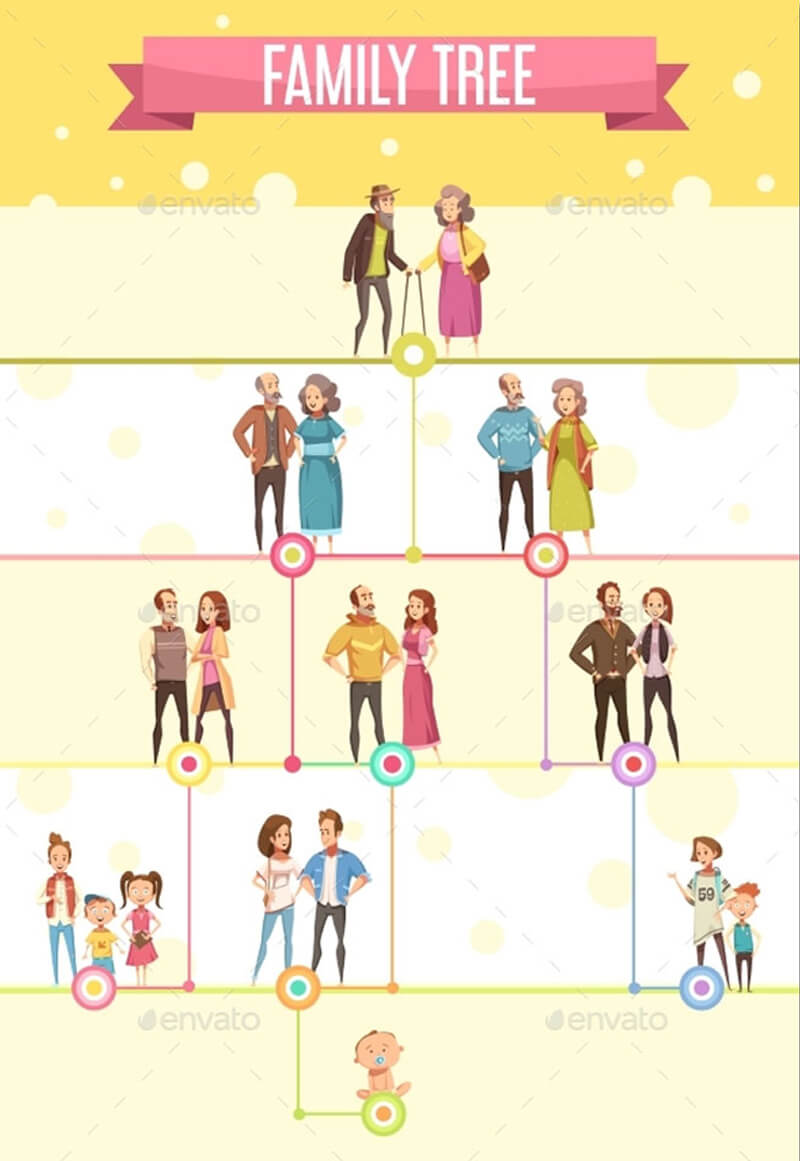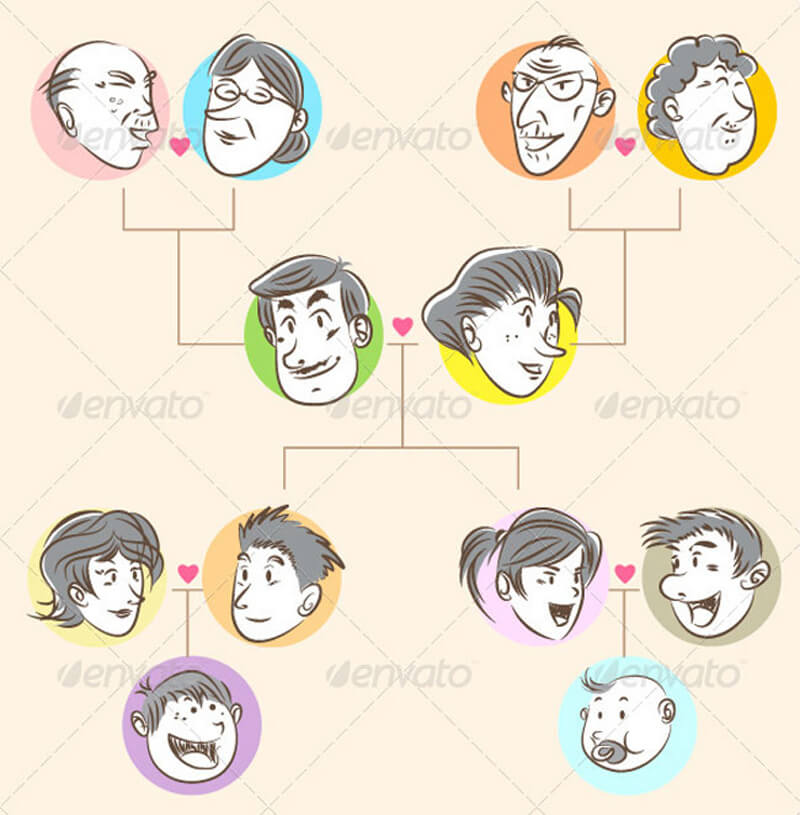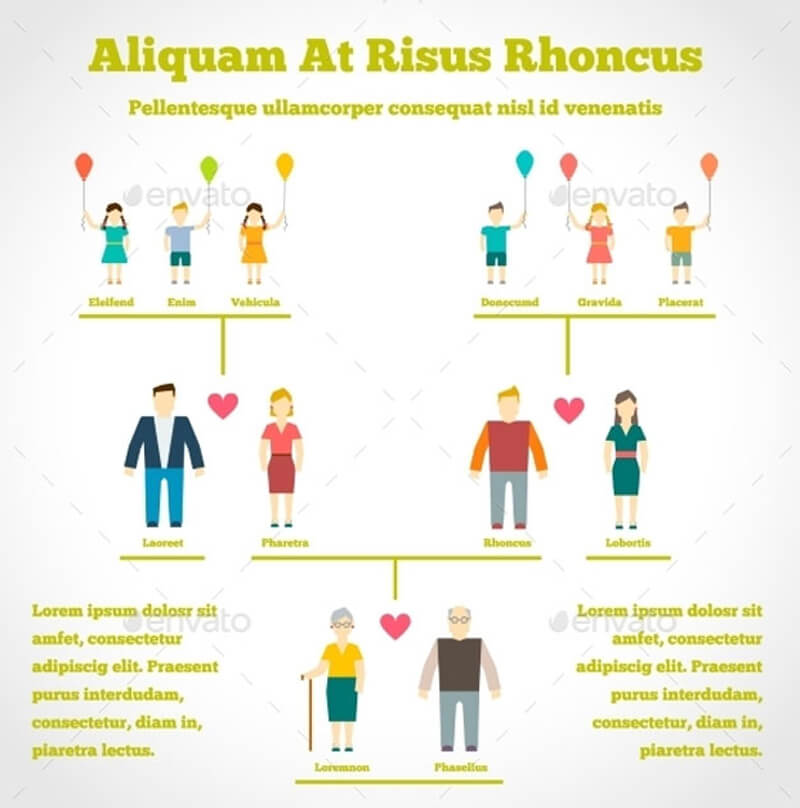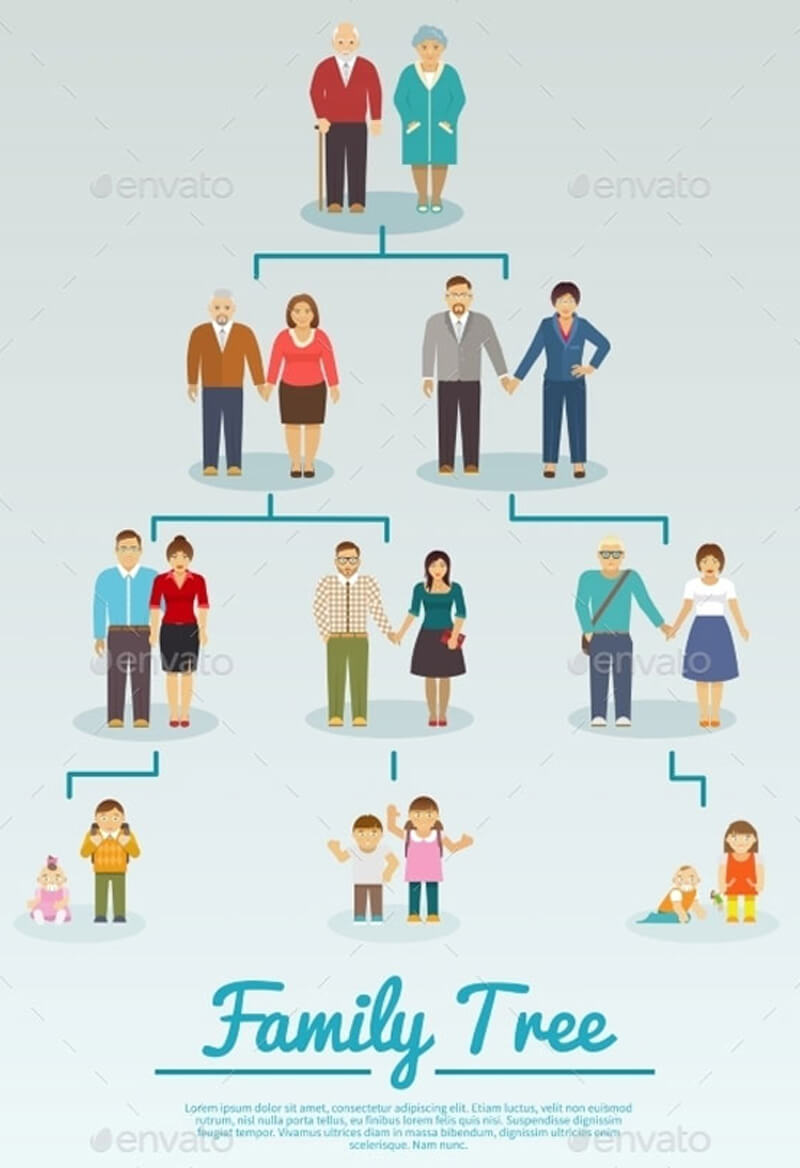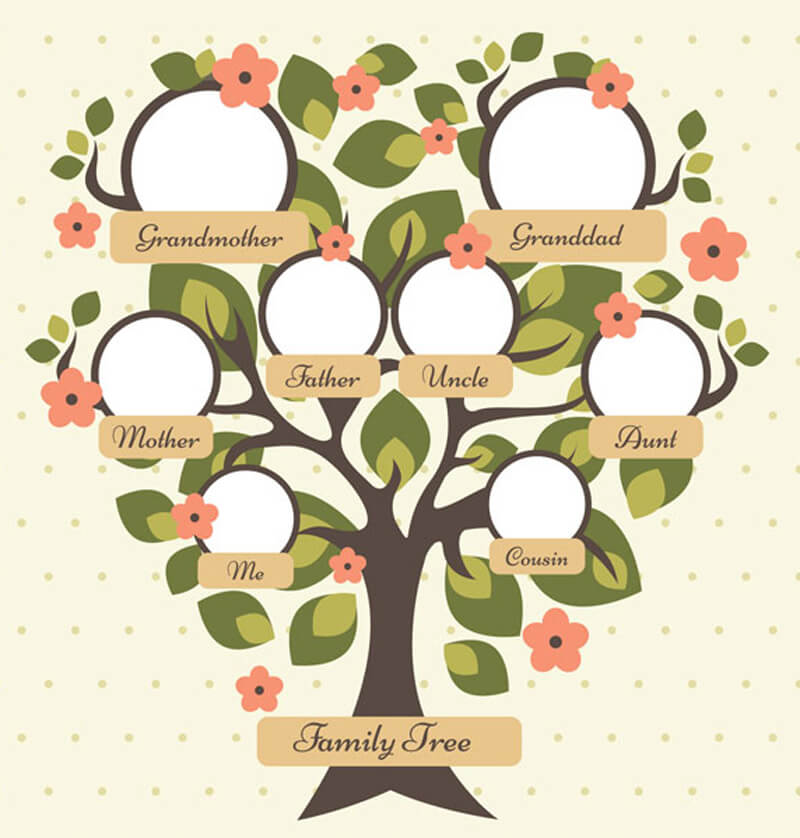Learning about your family and the fantastic people who make up your history can be a great way to connect to the past while sharing it with your current relatives.
Of course, there are many reasons that someone would choose to create a family tree chart, but when it is done, you have the document that portrays all the unique people related to you, whether you have a blood link to someone famous or not.
A family tree chart can tell you a lot about the people in your past, but it does take some time to put together and organize. Learning how to create a family tree and where to find accurate and reliable information can make this easier.
What is a Family Tree Chart?
A family tree, also known as a pedigree chart, is a way to represent your lineage throughout the different generations visually. It can sort through all the cousins, great aunts, uncles, and more, showing in a visual way how everyone is related to one another. While there are different ways to create a family tree chart, many choose to create it as a tree, choosing one individual to be the start of the tree and working its way down the family. Family trees may be used for personal reasons, but they are also brought in to help with social work or medical industries. In these areas, they are known as genograms instead.
You can add as much information to each tree branch as possible. Some family trees will include the name of each individual based on where they lie in the family. Other trees may include more information such as their birth date, marriage date, and death date. You will be able to find out who their parents, siblings, spouse, and children are based on where they fall in the family tree.
As you create a family tree, you can choose how far back to go within it, making some of these charts extensive. However, it is a great way to help show who you are related to and avoid confusion between some generations. Some families will do this to see how everyone is related, how historical figures are related to each other, or even to show off that they are a direct descendant of some famous figure.
Looking at the family tree, if you see there is a horizontal line between two names, this indicates that the two were married. A bracket that goes from that married (or in some cases unmarried) couple is meant to indicate they had children and can be a new branch of the family tree for them to work on as they add children, grandchildren, and more. Most family trees will be drawn vertically, from top to bottom, though it can sometimes go horizontally.
Reasons to Create a Family Tree Chart
Each family will have its reasons for creating a family tree chart. This can be a labor-intensive amount of work, especially if your family hasn’t done an excellent job of recording this information in the past. In addition, you may need to do a good deal of research to figure out the generations, which requires more work the further you decide to return.
Despite some potential work, there are many reasons to create your family tree chart. Some of these include:
- Creating this chart will give you an excellent connection to your history and heritage. Finding out more about where you come from and who you are can be powerful. You can learn more about the time they lived through and what made them so special. You may find stories that make you laugh, learn where certain personality traits came from, and feel a connection to the past that may surprise you.
- If you are worried about family health concerns and issues with genetics, creating a family tree can help you track these things and see how likely they are for you.
- Some families were involved in historical events. Learning about them can help to bring history to life.
- Learn some interesting facts about your family that can make them seem more fun.
- When you choose to get your children involved, it can encourage them to learn more and want to preserve some of the stories that have been passed down in the family.
A family tree can help you connect the past and the present. You can arrange a big family event where everyone can help with the research, share their family stories, and get in on the action. This can create new memories that will last a lifetime.
Fun Facts
Family trees can share a lot of fun information, and many people are surprised by some things that show up when they work on their chart. It is believed that Confucius had the most extended family tree, with nearly 2 million members. However, even if you do not have one quite that long, you can get your tree back at least eight generations; you can count close to 256 ancestors on average.
Family trees are not a new idea. For example, there are signs that the Japanese started tracing the ancestry of the imperial family during the 5th century, and the Bible talked about the descendants of Adam and Eve in the Old Testament. So when you decide to create your family tree, you are joining an ancient tradition of learning more about your family.
Pre-Writing Considerations
Before you start creating the family tree, you need to prepare and make sure you know what you are doing, how far back you would like to go, and more. Some of the things you can consider before starting to include:
Getting started
It is easy to get excited about creating a family tree and want to jump right in. However, to help you stay organized, you may need to do some planning first. Think about how far back you would like to go and whether someone in your family may have some information that you might need. Maybe your grandma or a great aunt has been gathering information for a while and could share that with you.
You should consider the information you want to add to the family tree. Having a lot of information on the chart can help, but it also requires more work, especially the further you go. For example, do you want to include the names of the individuals, or would you like important dates added in?
Consider the direction you would like to draw the tree. Most family tree charts go from top-down, but a few go horizontally. You can even look for unique options to help attractively fit in all the information.
Gather information about your family
Take stock of the information you already know about your family and write that information down. You can then ask parents, siblings, grandparents, and others to help fill in some of the gaps or add in another generation you may not be familiar with.
When you have this information, you may need to look at online genealogy sources and libraries, searching through land deeds, news stories, and census documents to learn more about your family and from where they all belonged. Unfortunately, you may not be able to go back as far as you would like. This is because the availability of records you can trust may be limited to a few generations. Most families will only be able to go back three or four generations due to the lack of information they can find.
Know your audience
Family trees are designed to depict bloodlines and the relationships between families. They can also document the history that various family members have gone through. Some of your current family may not know these stories. Consider who will read these stories and look over the family tree as you decide what to add to the chart.
How to Draw a Family Tree Chart
Now it is time to get into the nitty-gritty and write out the family tree chart. Again, there are different methods to use this, based on what you think looks the most visually pleasing and how many generations (and people in each generation) you need to include.
Draft an outline
Once you have gathered the information you need for the family tree, it is time to compile it into an outline. You can start it in any order you would like. Maybe you begin with the current generation and go backward in time, or you start with the oldest relative you could find and put them down first.
You can start creating this outline with a pen and paper. You will most likely make several drafts as you work through and add information, cross things out, and make changes. You may even need more room depending on how large your family is. The goal is to slowly work to a final copy with as much information about your family history as far back as possible.
When you add a family member to the tree, it will be represented by a shape that is then connected by lines to show their relationship to the others on the tree. Typically, you will use either a rectangle or a box to do this, but you have some freedom to add in any shape that you want. Within this shape, you will add important dates, any pictures you have, and other important information you wish to share in the family tree.

Use a template
If you are worried about writing out all of the information by hand or the revisions you will need to do, then another option is to use a pre-designed template. These templates allow you to input the information you want, including names, dates, and even images, to keep it all saved in one location. It is easier to make changes when necessary and move things around, which is why many people are likely choose this option.
Distribute your family tree chart
Take your time to put together the family tree diagram. You may need to talk to many older family members, look through historical and census records, and ask many questions. Unless someone has kept outstanding records for years, you will likely need to do a lot of the legwork.
At some point, you will have all the information you can gather, and the family tree is as complete as you can. Once you have finished the genealogy chart, share it with your other family members. So many others in your family want to see it, and this is a great time to catch up with family and have fun reminiscing.
Practices for Creating a Family Tree Chart
Creating a family tree can take some time to complete. You want to go back as far as you can in your family history, gathering information on as many generations as possible, which does take time. The records may not all be there, which can slow down the process.
Some things you can do to help create a family tree chart include:
Make it simple
The best thing to remember about making a family tree is that it must be simple. Work to make the information on the chart easy to scan and digest. This can avoid confusion and help other family members get the most out of the chart possible. For example, one trick to make this chart easy to ready, have each level of the tree be one single generation. This helps everyone follow the chart and know who belongs in the family.
Plan your family tree
Before making a family tree, you need to have a plan laid out for it. Next, determine what the end goal is for that chart. Do you plan to keep it for yourself or share it with other family members? Do you plan to print off copies to share or send them to others electronically? If the plan is to print off the document, then limiting the information you include can be best to ensure the tree is still easy to read. If you plan to email the document, the size can be more significant and include more information.
Determine the level of complexity
Family trees can vary from simple to complex based on the information you would like to include. Think about how many details you would like to include before getting started, keeping in mind that you may not be able to find all of the information you need to go back in history. Knowing how much information you want to include will give you an idea of how much research you will need to do, the design of the family tree, and the size of the boxes.
Frequently Asked Questions
What is genealogy?
Genealogy is the study of family history. As you create your family tree, you will become a genealogist by collecting data about your family. As you learn more about the generations who came before you, you will need to conduct interviews with other family members, look through historical records, and do other research to learn as much as possible.
What is a tree structure?
A tree structure is a great way to show off a family tree because it can show hierarchical data or data that needs to be organized based on levels. When used in a family tree, the data will be organized based on the generation of the family, with the older generations closer to the top and the current generation near the bottom. Those close relations, such as brothers and sisters, will be on the same level.
What is a genogram?
A genogram is a type of family tree, but it focuses more on the medical history of the members of the family. Some families will do this to help see whether they are likely to get a particular medical condition or not. Others may do this with the help of their doctor to see if there is a hereditary pattern with a specific disorder or disease.
